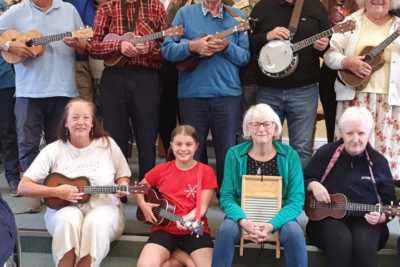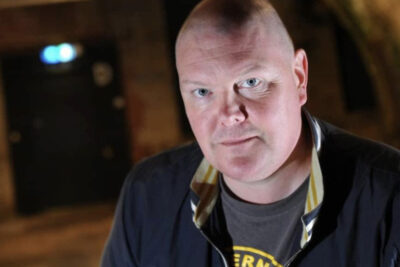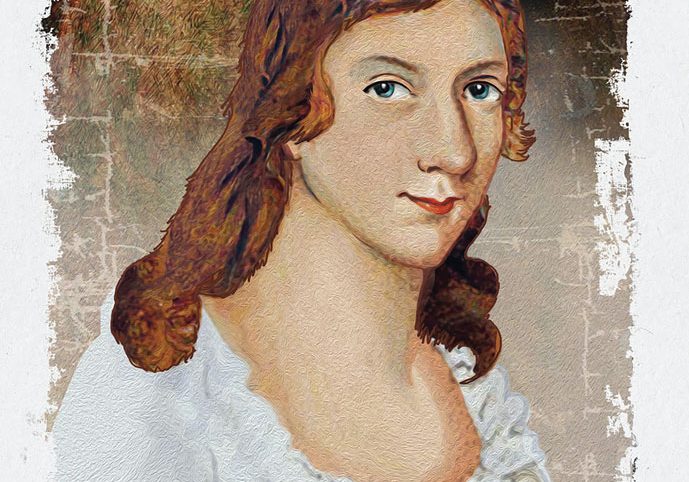
Literary Mother Maria Brontë
by Margaret Brecknell
Two hundred years ago, on 15th September 1821, Maria Brontë died in Haworth Parsonage at the age of just 38. Her daughters, Charlotte, Emily and Anne, would go on to achieve immortality as three of the most famous female writers of all time, but Maria herself has been largely forgotten by history.
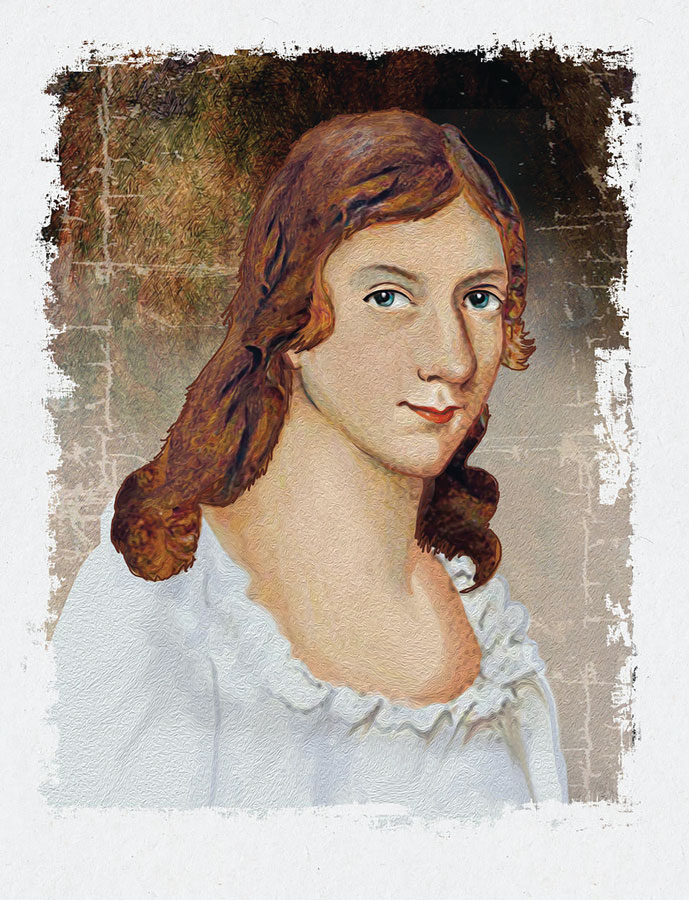
Maria was born on 15th April 1783, far from the Yorkshire village where she would end her days, in the Cornish town of Penzance. Her father, Thomas Branwell, was a prosperous merchant and local civic dignitary, as well as a leading member of the town’s Wesleyan Methodist community. Yet it has been suggested that behind this respectable façade the Branwell family may have dealt with the notorious gangs of smugglers then so active on the Cornish coast. Thomas Branwell is known to have owned at least one coaching inn in the town, so it is entirely possible that he was in contact with those dealing in illicit alcohol and turned a blind eye to their covert activities, as did many of his fellow townsfolk.
Maria spent the first three decades of her life in the family home on Chapel Street in Penzance until her parents both died suddenly within a year of each other. In the early summer of 1812, she made what was then the long and arduous journey to Yorkshire to visit her Aunt Jane, whose husband, John Fennell, had recently been appointed as the headmaster at Woodhouse Grove School. Maria proposed to help her aunt with housekeeping duties at the school, but there is nothing to suggest that at this stage she intended to move permanently to Yorkshire.
All that changed when not long after her arrival Maria met Irish clergyman, Patrick Brontë, for the first time. He was visiting her uncle, John Fennell, who was an old friend of his from the days when both had worked in Shropshire. Now, by coincidence, Patrick was only living some twelve miles away and working as a curate in Hartshead.
All the evidence seems to suggest that it was very much a case of love at first sight. Maria was aged 29 and Patrick some six years older, so by early 19th-century standards they would have been considered well past their prime in the marriage stakes. Maybe this explains why the couple did not waste much time in progressing their courtship and the couple were engaged within weeks after Patrick proposed in the romantic setting of Kirkstall Abbey.
During their engagement the attentive Patrick is said to have frequently made the 24-mile round trip on foot from Hartshead to take Maria out walking. For her part Maria wrote copious letters to her husband-to-be, whom she memorably addressed in one missive as “My dear saucy Pat”.
Maria arranged for her possessions to be shipped from Cornwall, although sadly off the Devon coast. She seemingly said goodbye forever to her old life in Cornwall without too many qualms, writing to Patrick in late October: “Unless my love for you were very great how could I so contentedly give up my home and all my friends – a home I loved for so long that I have often thought nothing could bribe me to renounce it for any great length of time… Yet the anticipation of sharing with you all the pleasures and pains, the cares and anxieties of life… is more delightful to me than any other prospect which this world can possibly present.”

Maria and Patrick were married at St Oswald’s Church in Guiseley in December 1812. The vicar who officiated at their wedding, the Reverend William Morgan, was, in turn, married to Maria’s cousin, Jane Fennell, by Patrick Brontë on the same day. According to the later recollections of a family member in the Cornish Telegraph, “Not only did the Rev. Mr Bronte and the Rev. Mr Morgan perform the marriage ceremony for one another, but the brides acted as bridesmaids for each other. Mr Fennell, who was a clergyman of the Church of England, would have united the young people, but he had to give both brides away”.
As well as this double marriage at Guiseley, a third family ceremony also took place at the same hour on the same day in far-off Penzance, with the wedding of Maria’s younger sister, Charlotte, to her cousin, Joseph Branwell. The same Cornish Telegraph contributor later recalled that “the arrangement for the three marriages on the same day… was one made entirely by the brides”.
Maria began her married life with Patrick at Clough House in Hightown and this was where their two eldest children, Maria and Elizabeth, were born. In 1815 her husband moved to a new position at Thornton and the family of four moved into Thornton Parsonage in May of that year.
It was in this modest mid-terraced home, about six miles from the village of Haworth with which they are now more famously associated, that the three literary sisters came into the world. Charlotte was born in 1816, Emily in 1818 and Anne in 1820. Their brother, Branwell, was also born there in 1817.
Patrick Brontë would later reminisce that “My happiest days were spent at Thornton”, so why did he and his wife take the fateful decision to move to Haworth in 1820? The simple truth was that the accommodation at Thornton had become much too cramped and uncomfortable for Patrick and Maria, their six young children and two servants, so Patrick complained to his Bishop about its unsuitability. Soon afterwards, upon the death of the previous incumbent, he was offered the position of parish curate at Haworth, which came with the generously proportioned Parsonage now familiar to Brontë fans across the world.
When Maria arrived with her family at Haworth in the spring of 1820, it probably felt like the start of an exciting new chapter in her life. Alas, it was not to be. In early January of the following year, she suddenly fell seriously ill with what is now believed to have been cancer. She lived for another eight months, but was in acute pain and largely bedridden, before passing away on 15th September 1821.
Some of the stories that have been passed down through the years relating to Maria’s final days are unbearably sad. Many years later one of the family’s servants, Nancy Garrs, recalled the occasion on which the five-year-old Charlotte went to show her ailing mother some sewing she had done, remembering, with tears, “the tiny maiden’s delight in her achievement and the mother’s fond praise in the weak voice that never quite lost its sweet Southern intonation”.
On her final morning Maria is reported to have asked that “all the dear faces should be about her” and her six children were brought in to see her for the last time. She slipped away soon afterwards and was buried in what subsequently became the Brontë family vault beneath Haworth church.
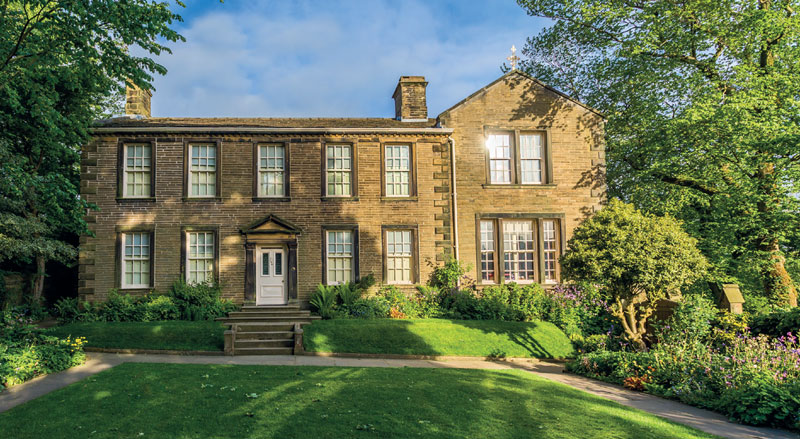
Image by Dave Zdanowicz, from the book Bradford in Photographs davezphotography.co.uk
Years later, in 1850, as an adult and sadly by then Maria’s only surviving child, Charlotte was handed a bundle of letters by her father. They were the letters written by Maria to Patrick during their courtship nearly forty years earlier. Charlotte wrote to a friend that “It was strange now to peruse, for the first time, the records of a mind whence my own sprang… and at once sad and sweet to find that mind of a truly fine, pure and elevated order… There is a refinement, a modesty, a gentleness about them indescribable”, before wistfully adding “I wish that she had lived, and that I had known her”.
Patrick Brontë, as a published author of poetry and prose, is usually credited with being the parent from whom the girls inherited their literary talent. On discovering her letters, it seems Charlotte came to appreciate that their mother possessed a similar enthusiasm and aptitude for writing, which she too passed down to her daughters. This seems a positive and wholly appropriate way in which to remember Maria Brontë on the bicentenary of her death.


